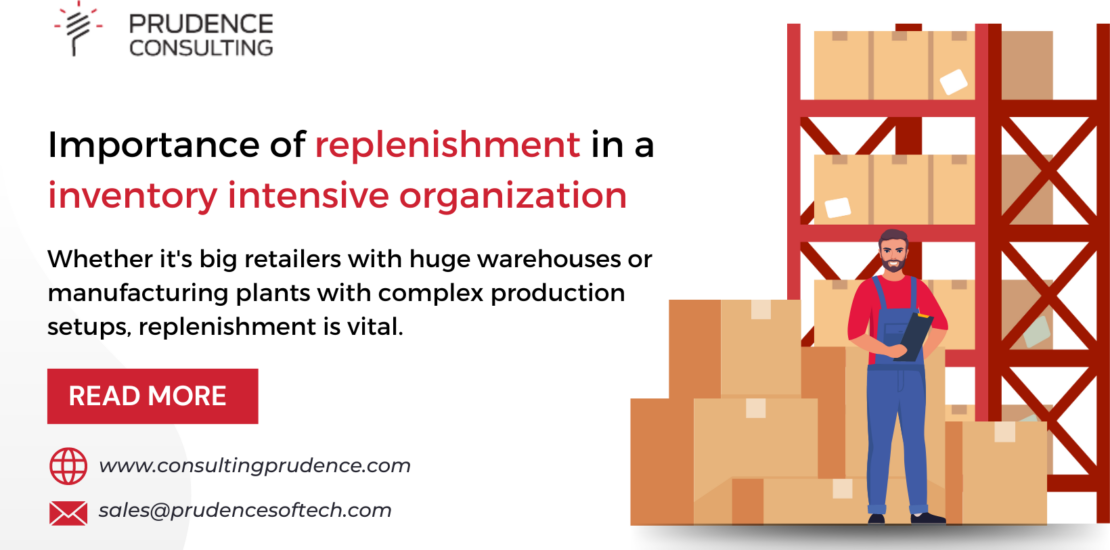Importance of replenishment in a inventory intensive organization
-
March 6, 2024
- Posted by: piyush.gupta@prudencesoftech.in
- Category: Workflow Management
No Comments

- March 6, 2024
- Posted by: piyush.gupta@prudencesoftech.in
- Category: Workflow Management


In inventory-intensive organizations, keeping the right amount of stock is very crucial for smooth operations and continued progress. Replenishment, the strategic process of balancing supply and demand, is key here. Whether it’s big retailers with huge warehouses or manufacturing plants with complex production setups, replenishment is vital. Let’s explore why it’s so essential in these settings.
What is Inventory Replenishment?
Inventory replenishment is the process of restocking and maintaining the quantity of products or materials that a business keeps on hand to meet customer demand or production needs. This process involves monitoring current inventory levels, forecasting future demand, and ordering or producing more items as needed to avoid stockouts or overstocking.
Why is it important?
- Meeting Customer Demand: One of the primary reasons for inventory replenishment is to ensure that a business can meet customer demand. Maintaining an adequate stock of products helps prevent stockouts or shortages, which can result in lost sales and dissatisfied customers.
- Optimizing Inventory Levels: Inventory replenishment helps businesses strike a balance between carrying enough inventory to meet demand and avoiding excess stock. Carrying excess inventory ties up capital and storage space and can lead to increased holding costs.
- Reducing Lead Times: By having a systematic replenishment process in place, businesses can reduce lead times from suppliers. This helps ensure that products are available when needed and minimizes the risk of production delays or customer dissatisfaction.
- Cost Control: Effective inventory replenishment can help control costs. By reducing the carrying costs of excess inventory and minimizing the expenses associated with stockouts, businesses can save money and improve their profitability.
- Improving Cash Flow: Maintaining optimal inventory levels through efficient replenishment practices helps businesses free up cash that would otherwise be tied up in excess inventory. This capital can be used for other operational needs or investments.
Conclusion
In summary, replenishment is important for inventory-intensive organizations in all sectors. It optimizes stock levels, boosts customer satisfaction, streamlines supply chains, uses data for better decisions, and cuts costs. It’s a key driver of operational success and staying competitive in today’s market. Prioritizing effective replenishment strategies is essential for long-term success, efficiency, and value creation.
Also Read : Dynamics NAV 2018 to Dynamics 365 Business Central


